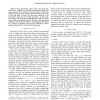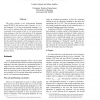1020 search results - page 89 / 204 » Tight Semantics for Logic Programs |
FUZZIEEE
2007
IEEE
14 years 3 months ago
2007
IEEE
— Fuzzy Description Logics (fuzzy DLs) have been proposed as a language to describe structured knowledge with vague concepts. It is well known that the choice of the fuzzy operat...
ACL
2001
13 years 10 months ago
2001
We provide a logical definition of Minimalist grammars, that are Stabler's formalization of Chomsky's minimalist program. Our logical definition leads to a neat relation...
ENTCS
2002
13 years 8 months ago
2002
Dynamic Logic Programming (DLP) was introduced to deal with knowledge about changing worlds, by assigning semantics to sequences of generalized logic programs, each of which repres...
JUCS
2006
13 years 9 months ago
2006
Abstract: Multi-adjoint logic programming represents a very recent, extremely flexible attempt for introducing fuzzy logic into logic programming. In this setting, the execution of...
VL
1993
IEEE
14 years 1 months ago
1993
IEEE
This paper presents a new programming language named SPARCL that has four major elements: it is a visual language, it is a logic programming language, it relies on sets to organiz...


